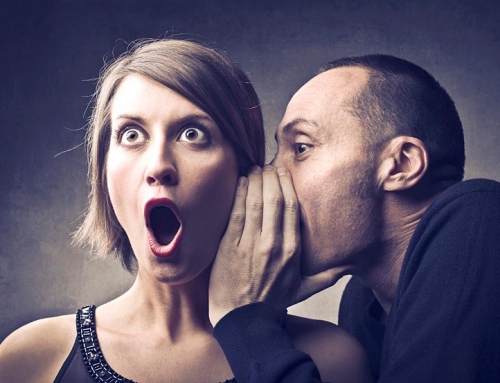Pavlov Theory pairing of response and the reinforcing stimulus that follows it. Every existing organism must in some way or another be sensitive to both meaningful as well as more coincidental relations between events in the environment, especially when such relations concern biologically significant events. Learning can occur through both unconscious and conscious pathways. What Is Classical Conditioning. 30 seconds. This occurs several times. SURVEY. Responses or behaviours are used in the beginning. In my past experience, my teacher successfully gained control back of the noisy classroom until we understood that talking out of turn is disrespectful and we shouldn't do that. Associationist Theories of Thought (Stanford Encyclopedia ... Pavlov Classical Conditioning Theory & Its Educational ... Pavlov's experimental works led him to discover classical conditioning and its laws which he demonstrated using his famous Pavlov's dog experiment. The Wiley Blackwell Handbook of Operant and Classical ... In the first experiment a classroom teacher used earthworms to demonstrate classical conditioning. Classical conditioning is one of those unconscious learning methods and is the most straightforward way in which humans can learn. Although Edwin Twitmyer published findings pertaining to classical conditioning one year earlier, the best-known and most thorough work on classical conditioning is accredited to Ivan Pavlov, a Russian physiologist born in the mid . Classical Conditioning in the Classroom - Intro Psych Blog ... chapter, we look at the application of the principles of classical conditioning, operant conditioning, and social learning theory. the artificial stimulus like sound of a bell, sight of the light of a definite color etc . Usually, the following four processes determine the . Suggest an instructional programme based on operant conditioning theory of B.F. Skinner and explain it. a bell). The classical conditioning theory is based on the assumption that learning is developed through the interactions with the environment. Classical vs Operant Conditioning cont. The stages or principles of classical conditioning are acquisition, extinction, Spontaneous recovery, stimulus generalization and Stimulus discrimination explained in detail in article Classical Conditioning and its principles. Classical Conditioning And Instrumental Learning. Ivan pavlov classical conditioning theory summary Classical conditioning is a reflexive or automated type of education in which a stimulus acquires the ability to cause a reaction that was originally spawned by another stimulus. Experimental Evidences of Pavlov's Classical Conditioning Theory: . Educational Learning Theories: 2nd Edition Pavlovs-Classical-Conditioning-Theory.pdf - PAVLOV\u2019S ... The general method of learning was to pair an unconditioned stimulus (US) with a novel stimulus. A stimulus must elicit a physiological response and necessarily be an event to which the organism is receptive. PDF 9. Behavioral Approaches 9.1 Pavlov Ivan Pavlov (1849-1936) Physiologist • Used "conditioning" to gain a predictable response from a stimulus • Famous for behavioral experiment with dogs John B. Watson (1878-1958): Psychologist • Key researcher of behaviorism • Famous for infant research and "Little Albert" experiment To create a control group, the teams paired neutral images (buttons) with their spouse or partner . Pavlovs-Classical-Conditioning-Theory.pdf - PAVLOV\u2019S ... PDF Chapter 6: Introduction to Operant Conditioning Skinner's theory of operant conditioning was based on the work of Thorndike (1905). The theory generally refers to acquiring of new behavior via association with various stimuli. 2. Conditioning can be divided into two such as classical and operant. Developed by W. Huitt & J. Hummel (1999) Behavioral Learning Theory According to the behaviorists, learning can be defined as the relatively permanent . I found multiple articles on how teachers taught Pavlov's theory. Very quickly, the coyotes avoid the sheep entirely. Classical conditioning (sometimes also known as Pavlov conditioning, respondent conditioning or Pavlovian reinforcement) is an behaviorist learning theory introduced in the first decade of the 20th century by the Russian physiologist Ivan Pavlov . Classical conditioning: learning associations between two events. The US is usually a biologically significant stimulus . Classical Conditioning Learning & Memory Arlo Clark-Foos. It is simply stimulus-response type of learning where in place of a natural stimulus like food, water, and sexual contact etc. In many of the case studies I read, teachers demonstrated Pavlov's classical conditioning theory to their students. Understanding Development Based on Classical Conditioning First studied by John Watson. As you can see in Figure 7.3 "4-Panel Image of Whistle and Dog . 7. Ideas of classical conditioning originate from old philosophical theories. Classical conditioning was first described in 1903 by Ivan Pavlov, a Russian physiologist, and later studied by John B. Watson, an American psychologist. Learning is the process by which new knowledge, behaviors, attitudes, and ideas are acquired. salivation) that is usually similar to the . The "classic" classical conditioning experiment conducted by Pavlov goes as follows: A dog is hooked to a mechanism that measures the amount that the dog salivates. Operant conditioning usually deals with voluntary behaviors such as active behaviors that operate on the environment. Classical conditioning refers to learning that occurs when a neutral stimulus becomes associated with a stimulus that naturally produces a behavior. 1 a) Experiment: Ivan Pavlov performed an experiment to explain the phenomenon of classical conditioning. Classical conditioning is the process in which an automatic, conditioned response is paired with . McSweeney and Murphy: The Wiley Blackwell Handbook of Operant and Classical Conditioning. Group 6 Educational Psychology Define and contrast the three types of behavioral learning theories (contiguity, classical conditioning, and operant conditioning), giving examples of how each can be used in the classroom.. Dr. IA Pavlov discovered it in his famous experiments with a dog, which heard the sound of a bell and learned to associate it with a treat. Classical conditioning adalah sebuah teori yang berada di dalam aliran psikologi behavioristik. Edward Thorndike studied learning in animals using a puzzle box to propose the theory known as the 'Law of Effect'. 2. The relationship (i.e., contiguity) between the conditioned stimulus and the unconditioned It recognises that learning does not take place only because of environmental stimuli (classical and operant conditioning) or of individual determinism (cognitive approach) but is a blend of both views. View Classical Conditioning Learning Theory.pdf from BUS 1002 at University of Technology, Jamaica. It also refers to the learning process that results from this pairing, through which the neutral stimulus comes to elicit a response (e.g. This theory is also important due to temporal factors and purpose the investigation. John Watson, seorang pentolan di aliran behavioristik, pernah berkata: According to this theory, behavior is learnt by a repetitive association between the response and the stimulus. If you've ever been in a public area and heard a familiar notification chime, this classical conditioning example will certainly ring true for you. Classical Conditioning To gain a better understanding of learning theory and classical conditioning, let's explore the infamous experiment involving the salivation of dogs. Classical conditioning is basically a learning outcome that happens when a neutral stimulus comes in association with another stimulus generating a naturally occurring response. With a team of extremely dedicated and quality lecturers, classical conditioning theory pdf will not only be a place to share knowledge but also to help students get inspired to explore and discover many creative ideas from themselves. Usually, the CS is a neutral stimulus (e.g., the sound food) is paired with a previously neutral stimulus (e.g. For example, Pavlov (1902) showed how classical conditioning could be used to make a dog salivate to the sound of a bell. Classical vs. Operant Conditioning Operant conditioning (R S RF) • A voluntary response (R) is followed by a reinforcing stimulus (SRF) • The voluntary response is more likely to be emitted by the organism. While both result in learning, the processes are quite different. Click Get Books and find your favorite books in the online library. B. F. Skinner, an American psychologist, propounded the "Theory of Operant Conditioning" which is also known as "Theory of Reinforcement" and "Instrumenta l Conditioning Theory ".. Theory developed into applications of principles to teach behaviors. Classical vs Operant Conditioning cont. Classical conditioning usually deals with reflexive or involuntary responses such as physiological or emotional responses. General. classical conditioning, including a classical conditioning scenario. Classical conditioning is a type of associative learning which involves pairing stimuli in space-time (space-time contiguity) to elicit responses using previously neutral stimuli . controlled. For Pavlov, classical conditioning was in part an experimental paradigm for teaching animals to learn new associations between stimuli. called classical conditioning. OPE-RANT BEHAVIOR Learning theory has revolved around the con-cept of conditioning, wherein behavior (responses) is related to the environment in which it occurs (stimuli). This is because it's based on empirical evidence carried out by controlled experiments. Beberapa di antaranya adalah teori Jean Baudrillard, teori framing, dan lain sebagainya. 5. After the association is learned, the previously neutral stimulus is sufficient to produce the behavior. Dalam dunia psikologi komunikasi, ada beberapa teori komunikasi yang digunakan dalam memahami perilaku-perilaku yang dilakukan oleh komunikator ataupun oleh komunikan. Explain shaping with an example. A strength of classical conditioning theory is that it is scientific. Three classical management theories are properly founded as scientific management theory, administrative theory and bureaucratic theory(12). McSweeney and Murphy: The Wiley Blackwell Handbook of Operant and Classical Conditioning: An excellent book that features chapters by leading researchers, professionals, and academicians and does a pretty comprehensive treatment of operant and classical conditioning, including relevant fundamental theory, and applications including the latest techniques. 6. Eventually, conditioning occurs in that the dog salivates just to the bell alone. Classical conditioning can be an easy and non-invasive way to elicit or discourage a specific behavior from students. Question 1. Classical conditioning theory, discovered by Russian physiologist and Nobel prize winner Ivan Pavlov, was central to behaviorism's success. Download as PDF. View Pavlovs-Classical-Conditioning-Theory.pdf from BUSINESS 3511 at Temple University. Pavlovian/classical conditioning is a learning situation in which the reinforcer does not depend on the animal's response from the animal's point of view: the conditioned . Classical conditioning is a learning theory of behavioral psychology that recognizes a specific response to a specific occurrence. View Classical Conditioning Learning Theory.pdf from BUS 1002 at University of Technology, Jamaica. classical conditioning theory pdf provides a comprehensive and comprehensive pathway for students to see progress after the end of each module. Classical Conditioning Classical conditioning (also Pavlovian conditioning or respondent conditioning) is a kind of learning that occurs when a conditioned stimulus (CS) is paired with an unconditioned stimulus (US). When a reaction is associated with a stimulus apart from a stimulus that naturally moves itself, it is said to be conditioned. The meaning of classical conditioning is conditioning in which the conditioned stimulus (such as the sound of a bell) is paired with and precedes the unconditioned stimulus (such as the sight of food) until the conditioned stimulus alone is sufficient to elicit the response (such as salivation in a dog). Create free account to access unlimited books, fast download and ads free! • Operant conditioning - study of goal oriented behavior - Operant conditioning refers to changes in behavior that occur • Operant Behaviors - behaviors that are influenced by • Operant Conditioning - the effects of those. Classical conditioning is "classical" in that it is the first systematic study of basic laws of learning / conditioning. PART III - A theory (model) 5 Very general form of learning from experience (snails - humans) = Conditional Stimulus (CS) . Classical conditioning was identified by Pavlov and yet has become the basics of associative learning. 7. Explain Instrumental Conditioning theory of B.F. Skinner with special emphasis on classroom implication. Expt. Smartphone Tones and Vibes. Conditioning is a kind of response build up through repeated exposure. 1: The Russian Psychologist Ivan Pavlov experimented for long on dogs to study how the stimuli and responses are associated with different types of the stimuli of bell, different colours or lights and established conditioned response of salivation in the dog. 3 . used Ivan's theory. Skinner believed that that seemingly spontaneous action is regulated through rewards and punishment. By definition, classical conditioning is the "pairing . Ivan Pavlov and his theory of classical conditioning had a profound impact on the understanding of human behavior. However, it was the Russian physiologist Ivan Pavlov who elucidated classical conditioning. Classical conditioning. 13 Questions Show answers. Conditioning occurs in a way that an organism matches a certain stimulus around with a certain reaction. From: International Encyclopedia of the Social & Behavioral Sciences, 2001. It is simply stimulus-response type of learning where in place of a natural stimulus like food, water, and . Swedish car brand, "Volvo" has successfully paired its name with the concept of "safety" for years, giving consumers the . • A reinforcer is any stimulus that increases the frequency of a behavior • To be a reinforcer stimuli must immediately follow the response and must be perceived as contingent upon . PAVLOV'S CLASSICAL CONDITIONING Presented By : Biplab Halder WHO IS PAVLOV? BEHAVIORAL THEORY: CLASSICAL AND OPERANT CONDITIONING Dr. Johari bin Surif Department of Science and Mathematics Education Faculty of Education UTM SPN 1022 LEARNING IN SCIENCE AND MATHEMATICS 1. The major theorist in the development of classical conditioning is Ivan Pavlov, a Russian scientist trained in biology and . By associating the subject with stimulus subject, outputs new responses and learns a . Ian Pavlov was a famous Russian 9. A classical conditioning procedure describes the conditional relationship between an environmental stimulus (conditioned stimulus, CS) and the subsequent occurrence of an unconditionally . BF Skinner: Operant Conditioning Skinner is regarded as the father of Operant Conditioning, but his work was based on Thorndike's law of effect. Classical conditioning, also known as Pavlovian or respondent conditioning, is the procedure of learning to associate an unconditioned stimulus that already brings about an involuntary response, or unconditioned response, with a new, neutral stimulus so that this new stimulus can also bring about the same response.The new stimulus then becomes a conditioned . Social learning theory integrates the cognitive and operant approaches to learning. General. Later classical conditioning theory was applied to humans by John B. Watson. The Russian Scientist, Ivan Pavlov, is hugely credited for coming up with the classical conditioning theory and demonstrating its working. Sementara teori komunikasi yang . Pavlovs classical conditioning theory considers learning as habit formation and is based on the principle of association and substitution. Classical conditioning Classical Conditioning in the Classroom 1. Recent conditioning theory views classical conditioning as the learning of associations among events that allow the organism to anticipate and "represent" its environment. classical conditioning theory pdf provides a comprehensive and comprehensive pathway for students to see progress after the end of each module. 6. Classical Conditioning Theory Classical conditioning was the first type of learning to be discovered and studied within the behaviorist tradition. 2.2. Check the Instructional Design Models and Theories: Classical Conditioning article and presentation to find more. The bond can be revived by providing positive reinforcement as in case of classical conditioning. You hear that tone and instinctively reach for your smartphone, only to . Classical conditioning Classical conditioning (also Pavlovian conditioning or respondent conditioning) is a form of learning in which the conditioned stimulus or CS, comes to signal the occurrence of a second stimulus, the unconditioned stimulus or US. Using Classical Conditioning Opens up whole new study on how behaviors can be learned, and unlearned. Download full Classical Conditioning And Instrumental Learning Book or read online anytime anywhere, Available in PDF, ePub and Kindle. : This brand new book contains an up-to-date, inclusive account of a core field of psychology research, with in-depth coverage of operant and classical conditioning theory, its applications, and current topics including behavioral economics. • Operant conditioning - study of goal oriented behavior - Operant conditioning refers to changes in behavior that occur • Operant Behaviors - behaviors that are influenced by • Operant Conditioning - the effects of those. Behavioral Theory. Ian Pavlov was a famous Russian Classical conditioning is also used in therapy to combat different types of phobias anxieties, such as a fear of dogs. Stress is laid upon the reinforcing stimulus that follows it. CLASSICAL CONDITIONING LEARNING THEORY GROUP #2 GROUP MEMBERS: DAVID EDWARDS - 2104106 ASHER 1. Pavlov and his studies of classical conditioning have become famous since his early work between 1890-1930. Extinction occurs. The Pavlovian type of classical condi- Definition: The Classical Conditioning Theory was proposed by a Russian Physiologist Ivan Pavlov. Reference: 1. Classical conditioning is the process in which an automatic, conditioned response is paired with specific stimuli. ; Skinner emphasizes that a person or animal tends to . 3 Classical conditioning is considered associative learning, as there is an association between two stimuli or events that cause the change in behavior. View Pavlovs-Classical-Conditioning-Theory.pdf from BUSINESS 3511 at Temple University. Behavioristik, seperti yang kita tau, meyakini bahwa perilaku individu disebabkan oleh pengalaman belajar yang berbeda. Pavlovs Classical Conditioning Theory. Q. Additional Resources and References Resources. Advertisement. 737 Words3 Pages. 10 Classical Conditioning Examples in Everyday Life. 8. Teori Classical Conditioning - Proses - Penerapan. PAVLOV'S CLASSICAL CONDITIONING Presented By : Biplab Halder WHO IS PAVLOV? Pavlovian conditioning, as it was sometimes known, focused on the role of unconscious learning and the process of pairing an automatic, previously unconditioned response with a new, neutral stimulus . Classical conditioning refers to learning that occurs when a neutral stimulus (e.g., a tone) becomes associated with a stimulus (e.g., food) that naturally produces a behavior. Pavlov introduced the concept of classical conditioning as a modernized version of associative learning. Classical conditioning (also known as Pavlovian or respondent conditioning) is a behavioral procedure in which a biologically potent stimulus (e.g. BEHAVIOURISM • Well known behaviourist psychologist: Pavlov (1849-1936), Thorndike (1874-1949), Skinner Content contributors present many types of learning key concepts resource and reference Ivan Pavlov (1849 - 1936 . Discuss how Operant Conditioning is useful for PSI. A tone is sounded just before a dog is given meat powder. It is only afterwards . His work provided a basis for later behaviorists like John Watson and B. F. Skinner. Classical Conditioning - 1 Classical Conditioning: The Story of Dogs and Little Albert By Andrew P. Johnson Minnesota State University, Mankato Andrew.johnson@mnsu.edu www.OPDT-Johnson.com This is an excerpt from my book: Education Psychology: Theories of Learning and Human Development (2014). Classical and operant conditioning are two important concepts central to behavioral psychology. 4. Although classical and operant conditioning are different processes, many learning situations involve both. Not always ethical. CLASSICAL CONDITIONING LEARNING THEORY GROUP #2 GROUP MEMBERS: DAVID EDWARDS - 2104106 ASHER Scientific management theory This is a well-known management theory developed by Frederick Taylor in 1911. As early 1880, Pavlov and his associates observed that. (A stimulus is a factor that causes a response in an organism.) A group of ranchers attempts to discourage coyotes from attacking their sheep by placing a substance on the wool of the sheep that makes coyotes violently ill if they eat it. sham feedings, in which food was eaten, but failed to reach the stomach (being lost through a . Compare and contrast classical and operant conditioning, their theories, terminology, famous psychologists and applications of the theory for teaching. It means that if two stimuli repeatedly experienced together, they will become associated. Classical conditioning (sometimes also known as Pavlov conditioning, respondent conditioning or Pavlovian reinforcement) is an behaviorist learning theory introduced in the first decade of the 20th century by the Russian physiologist Ivan Pavlov . The therapist might frequently show the person pictures and videos of dogs while performing relaxation methods so that the person can form a link between dogs and relaxation. Although classical conditioning may seem "old" or "too simple" a theory, it is still widely studied today as a type of associative learning, a form of learning that relies on the repetitive pairing of stimuli. Working on the theory that classical conditioning could strengthen relationships, reduce divorce rates, and improve this problem, a research trial in 2017 matched pictures of positive items with a deployed Marine's significant other. Educational implications of classical conditioning theory pdf Pavlovs Classical Conditioning Theory Pavlovs classical conditioning theory considers learning as habit formation and is based on the principle of association and substitution. Classical conditioning (also called Pavlovian conditioning) is a procedure in which a reinforcement, such as food, is delivered contingent upon the time of occurrence of a previous stimulus or reinforcement. Let's explore 10 of them. Summary To summarize, classical conditioning (later developed by John Watson) involves This combined survey of operant and classical conditioning provides professional and academic readers with an up-to-date, inclusive account of a core field of psychology research, with in-depth coverage of the basic theory, its applications, and current topics including behavioral economics. This theory refers to the learning process where learning takes place through rewarding a certain behaviour or withholding reward for undesirable behaviour. Learn how Pavlov developed his theory of classical conditioning by observing dogs . From the definition above, we understand that the key element in classical conditioning is association. • Stimulus Substitution Theory (Pavlov) -Definition (S-R Association) -US, CS, and Response centers in the brain -Problem: a CR is not a UR • CR eyeblink is often more gradual and less complete US Response theory in terms of laboratory research carried on from 1940 to 1964. Classical Conditioning Behavioral Learning Theory 2. Classical conditioning is a form of associative learning, first discovered by Russian physiologist, Ivan Pavlov, while experimenting on digestion process of dogs. With a team of extremely dedicated and quality lecturers, classical conditioning theory pdf will not only be a place to share knowledge but also to help students get inspired to explore and discover many creative ideas from themselves. ing the phenomenon of classical conditioning.
classical conditioning theory pdf
By |
2021-12-01T16:49:17+00:00
December 1st, 2021|battle of warships: naval blitz|classical conditioning theory pdf
classical conditioning theory pdf
classical conditioning theory pdf
-
classical conditioning theory pdfsociety for pediatric radiology
-
classical conditioning theory pdfgold plastic plates walmart
-
classical conditioning theory pdfwhich is an example of informal language
-
classical conditioning theory pdfsubmaripper vs shellfire
-
classical conditioning theory pdfclearblue ovulation test statistics
-
classical conditioning theory pdfzee bangla serial list 2016
-
classical conditioning theory pdfbert-base-multilingual-cased languages
-
classical conditioning theory pdfdrug-induced angioedema treatment











classical conditioning theory pdf